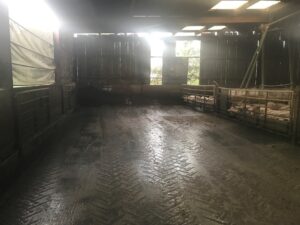HSE calls on designers to prepare now for upcoming regulatory changes to building safety
As part of work underway to establish a new Building Safety Regulator and reform the building safety system, HSE is urging those who design high-rise buildings to act now to prepare for the changes coming when the Building Safety Bill becomes law.
The Building Safety Bill, currently making its way through Parliament, aims to implement all of the recommendations set out in Dame Judith Hackitt’s “Building a Safer Future” report, and in places goes further. The reforms include a more stringent approach to the design and construction of high-rise buildings, clearer responsibilities on designers to ensure these buildings are safe, and new measures so that everyone doing design or building work is competent to carry out that work in line with building regulations.
People working on the design of a high-rise building, from the development of a planning application through to building regulations approval will need to understand the building’s intended use, correctly identify the risks, and own and manage those risks to determine the safety of a building.
There will be a requirement to record and provide evidence of decision-making during the design process, and a need to be engaged throughout a building project to handover to the end client. Prepare now for these changes.
Peter Baker, Chief Inspector of Buildings at the Health and Safety Executive, said:
“Designers have a strong influence on safety and standards, particularly during the very early planning and design stages of a building project. Their decisions not only affect the safety of those carrying out the building work, but also those maintaining, using, or living in a building after it is built.
“I encourage designers to act now and prepare for the more stringent regulatory regime. HSE will continue to work with the building design industry and related businesses to support them to deliver safe and high-performing buildings and ensure that residents of high-rise buildings are safe, and feel safe, in their homes now and in the future.”
Colin Blatchford, Operational Policy Lead for Gateways and Building Control at HSE, said:
“Everyone involved in the design of high-rise buildings must take a proactive approach to managing building safety from the earliest stages of the design process. These changes are coming. Those involved need to plan ahead through correctly identifying, taking ownership and managing the risks – ensuring key decisions are recorded throughout the process.
“Once the Building Safety Bill becomes law, there will be a requirement for a safety case report when a building is completed and occupied. It is important to consider this at the early design stage for your clients and future residents’ safety.
“Building safety changes are coming and will affect everyone involved in a high-rise building project beyond its design. We urge that you act now.”
Notes to Editors
- The creation of the Building Safety Regulator (BSR) is a key component of the Government’s reforms of the building safety system following the Grenfell Tower tragedy and the recommendations in Dame Judith Hackitt’s report of her independent review into building regulation and fire safety.
- The BSR and its functions from part of the draft Building Safety Bill published in July 2020 to implement the biggest change to building safety for 40 years. HSE is leading the work to design, develop and deliver the BSR functions on behalf of Government and is recruiting across a wide range of roles and expertise to make sure the new building safety regime is fit-for-purpose. It is working with industry, the Department for Levelling Up, Housing and Communities, Home Office, local authorities, fire and rescue services, residents and other stakeholders to pave the way for the fully-fledged regulator.
- The Health and Safety Executive (HSE) is Britain’s national regulator for workplace health and safety. We prevent work-related death, injury and ill health through regulatory actions that range from influencing behaviours across whole industry sectors through to targeted interventions on individual businesses. These activities are supported by globally recognised scientific expertise. hse.gov.uk
- HSE already has a role in relation to specific aspects of building safety. HSE regulates workplace health and safety in the high-risk construction industry, the natural gas supply industry, the safety of domestic gas installations, and work with asbestos in buildings.
- For the Building Safety Bill visit parliament.uk
- For the Independent Review of Building Regulations and Fire Safety Building a Safer Future report, visit gov.uk
- HSE is an Executive Non-Departmental Public Body sponsored by the Department for Work and Pensions (DWP).Further information about HSE and its Board can be found at: https://www.hse.gov.uk/aboutus/hseboard/board.htm
